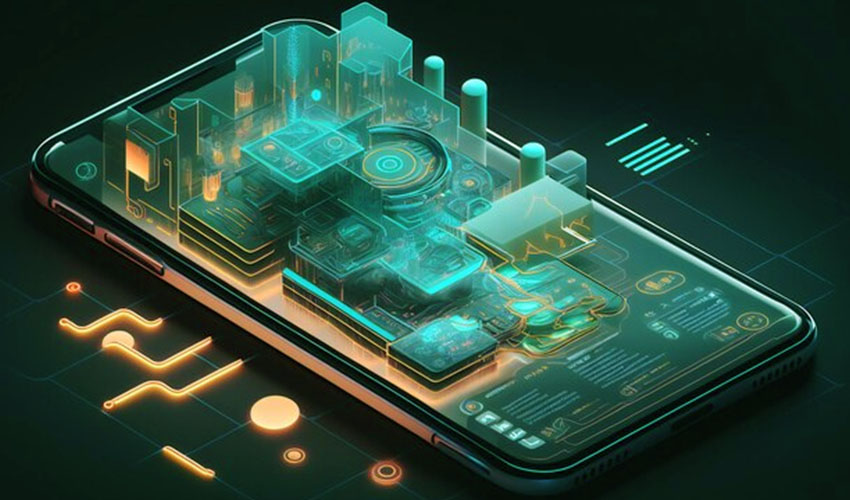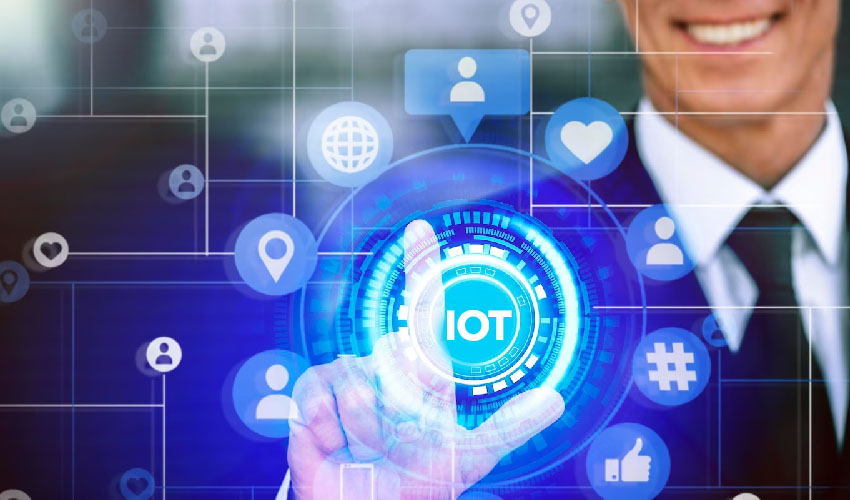Table of Contents
I. Introduction
A. Definition of IoT
Before delving into the intricacies of mobile app development for IoT devices, let’s grasp the essence of IoT. The Internet of Things refers to a network of interconnected devices embedded with sensors, software, and other technologies to exchange data and communicate with each other. These devices could range from smart home appliances to industrial machinery, collectively creating an ecosystem of interconnected intelligence.
B. Significance of Mobile App Development for IoT Devices
The significance of mobile app development in the realm of IoT cannot be overstated. Mobile applications act as the interface through which users interact with IoT-enabled devices. Whether it’s controlling smart home devices through a mobile app or monitoring industrial processes remotely, the role of mobile apps is pivotal in enhancing the functionality and user experience of IoT devices.
II. The Intersection of Mobile App Development and IoT
A. Overview of IoT-enabled Devices
The landscape of IoT-enabled devices is diverse, encompassing a wide array of industries and applications. From smart thermostats and wearables to connected industrial machinery, the scope of IoT is continually expanding. Mobile app developers play a crucial role in creating applications that seamlessly integrate with these devices, offering users a centralized control point for their IoT ecosystem.
B. Role of Mobile Apps in Enhancing IoT Functionality
Mobile apps go beyond being mere controllers for IoT devices. They enhance the overall functionality by providing features such as real-time monitoring, data visualization, and personalized settings. The synergy between mobile app development and IoT opens up new possibilities for creating intelligent and user-friendly solutions.
III. Challenges in Mobile App Development for IoT
A. Compatibility Issues
One of the primary challenges in developing mobile apps for IoT is ensuring compatibility across a diverse range of devices. With different manufacturers adopting various communication protocols, developers need to navigate the complexities to create apps that seamlessly work across multiple platforms.
B. Security Concerns
Security is a paramount consideration in IoT, and mobile app developers must address vulnerabilities associated with data transmission and device interactions. Implementing robust encryption, secure authentication mechanisms, and regular updates are essential to safeguard user data and maintain the integrity of the IoT ecosystem.
C. Connectivity Challenges
IoT devices often operate in environments with varying connectivity conditions. Mobile app developers face the challenge of ensuring consistent performance, even in scenarios with intermittent or low-quality network connections. Implementing strategies like offline capabilities and optimized data synchronization becomes crucial.
IV. Key Considerations in Building Apps for IoT Devices
A. User Interface (UI) Design
Creating an intuitive and user-friendly interface is imperative in the development of IoT apps. Users should be able to interact seamlessly with the app, accessing and controlling their IoT devices with ease. Thoughtful UI design enhances the overall user experience and encourages widespread adoption of IoT solutions.
B. Data Handling and Analytics
IoT devices generate vast amounts of data, and effective data handling is a critical aspect of mobile app development. Incorporating analytics capabilities into the app allows users to derive meaningful insights from the data generated by their connected devices. This, in turn, adds value to the user experience and the overall functionality of the IoT ecosystem.
C. Integration with IoT Protocols
Different IoT devices communicate using specific protocols. Mobile app developers need to integrate seamlessly with these protocols to ensure smooth communication between the app and the IoT devices. Whether it’s MQTT for lightweight messaging or CoAP for constrained environments, understanding and implementing these protocols is vital.
V. Best Practices in Mobile App Development for IoT
A. Cross-Platform Development
In a diverse IoT landscape, where devices run on various operating systems, cross-platform development becomes a best practice. Developing apps that can run on both iOS and Android platforms ensures a broader reach and accessibility for users across different devices.
B. Real-time Communication Integration
Real-time communication is often a requirement in IoT scenarios. Mobile apps should facilitate instantaneous communication between the user and their devices. Integrating real-time features ensures a responsive and seamless experience, especially in applications where timely actions are crucial.
C. Scalability and Future-Proofing
As the IoT ecosystem continues to evolve, scalability becomes a key consideration. Mobile app developers should design applications that can scale with the growing number of connected devices. Additionally, future-proofing the app by staying abreast of emerging technologies ensures longevity and relevance in the dynamic IoT landscape.
VI. Case Studies: Successful Mobile Apps for IoT
A. Smart Home Applications
Leading the way in the IoT revolution, smart home applications offer users the ability to control and monitor various aspects of their homes remotely. From adjusting thermostat settings to managing security systems, these apps showcase the seamless integration of mobile technology with IoT.
B. Industrial IoT Solutions
In the industrial sector, mobile apps play a pivotal role in monitoring and controlling machinery and processes. This not only enhances efficiency but also contributes to predictive maintenance, reducing downtime and optimizing operations.
C. Healthcare Apps for IoT Devices
Healthcare has embraced IoT with applications ranging from remote patient monitoring to smart medical devices. Mobile apps in the healthcare sector contribute to personalized and data-driven patient care, showcasing the transformative potential of IoT in improving lives.
VII. The Future of Mobile App Development for IoT
A. Emerging Trends
The future of mobile app development for IoT holds exciting possibilities. Emerging trends include the integration of artificial intelligence, edge computing, and 5G connectivity. These advancements promise to further enhance the capabilities of IoT-enabled mobile applications, opening new avenues for innovation.
B. Innovations in IoT Technology
Continuous innovation in IoT technology is driving the evolution of mobile apps. From more efficient energy management in smart homes to predictive analytics in industrial settings, ongoing innovations in IoT contribute to creating smarter and more connected environments.
VIII. Conclusion
In conclusion, the symbiotic relationship between mobile app development and IoT is reshaping the way we interact with technology. As we navigate the challenges and embrace best practices, the future holds immense potential for creating intelligent, user-friendly, and innovative solutions. The evolution of IoT-enabled mobile apps is not just a technological progression but a gateway to a more connected and intelligent world.
FAQs
- Q: Is mobile app development for IoT only applicable to smart home devices? A: No, mobile app development for IoT extends to various industries, including healthcare, industrial, and more.
- Q: How can developers address security concerns in IoT app development? A: Developers can implement robust encryption, secure authentication, and regular updates to address security issues in IoT apps.
- Q: What role does real-time communication play in IoT mobile apps? A: Real-time communication ensures instantaneous interaction between users and their IoT devices, enhancing the user experience.
- Q: Are there cross-platform development tools for IoT mobile apps? A: Yes, there are cross-platform development tools that enable the creation of apps compatible with both iOS and Android.
- Q: What are the emerging trends in mobile app development for IoT? A: Emerging trends include the integration of artificial intelligence, edge computing, and 5G connectivity.
Thanks for reading our post “Mobile App Development: Building Apps for IoT Devices”. Please connect with us to know more about Building Apps for IoT Devices.




















